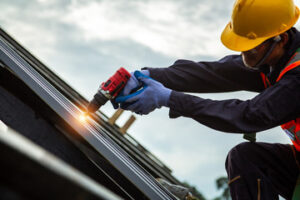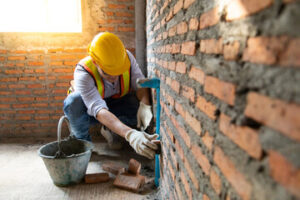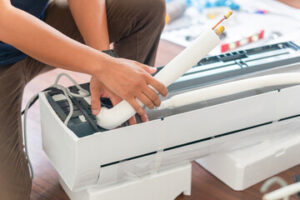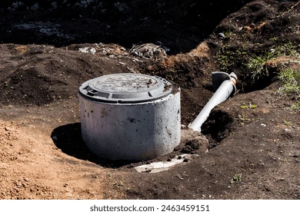As the military shifts to lighter armored vehicles, its old HMMWVs (the acronym for High Mobility Multipurpose Wheeled Vehicle) have become surplus. The Defense Logistics Agency began auctioning the trucks on Gov Planet this year.

A guy bought one at auction and fitted it with a supercharger. This made it a true off-roading powerhouse. Read on Military Humvee For Sale for more details.
The military Humvee has become more than just a workhorse—it’s also a cultural icon. Its boxy design, which was intended to maximize interior space and provide ballistic protection, makes it instantly recognizable. Its ruggedness and off-road capabilities have made it a favorite for both civilians and adventurers alike. If you’re in the market for a Military Humvee For Sale, there are many options to choose from. These vehicles range from troop carriers to ambulances, and they can be equipped with a variety of specialized equipment.
The M1038A1 is a versatile Humvee designed for towing and recovery operations. Its powerful diesel engine and four-wheel drive system deliver impressive off-road capabilities, making it the perfect vehicle for tackling challenging terrains. It can even haul stranded vehicles and equipment, making it an ideal choice for rescue missions.
If you’re in the market for
an ex-military Humvee, consider choosing a model with upgraded suspension and seating. These upgrades can improve comfort and make long journeys more enjoyable. They can also help to reduce noise levels and vibrations, which can make it easier to concentrate on the road ahead of you.
If you’re in the market for securing a Military Humvee For Sale, consider shopping at a company that specializes in converting these vehicles into street-legal vehicles. These companies offer a wide selection of models and are committed to quality, customer satisfaction, and expert conversions. They can even help you find a vehicle that meets your specific needs and budget. Contact them today to learn more about the different options available. They can also answer any questions you may have about the process of purchasing a Military Humvee For Sale.
Off-Road Capabilities
Humvees are built for extreme off-road conditions, with a powerful engine and solid axles that allow them to traverse terrain that would make most vehicles struggle. This makes them ideal for military operations, where they need to carry cargo and soldiers through harsh environments. These trucks also feature a wide stance that provides stability in rough conditions, making them easy to drive over obstacles like logs and boulders.
In addition to their off-road capabilities, Humvees are well-suited for urban combat, as they can easily maneuver through the streets of a city or town. The truck’s light design also allows it to be loaded onto a C-17 transport aircraft for airdrop in remote areas. In the 1993 Battle of Mogadishu, the Army used a fleet of Humvees to support troops fighting in the city. However, the experience taught them that these vehicles were not sufficiently armored or equipped for the modern battlefield, and some were incapacitated by machine-gun fire and landmines.
The Army is now developing new vehicles, such as the Joint Light Tactical Vehicle (JLTV), that can perform the same missions as the Humvee but offer more protection and payload. However, the Humvee’s legacy as a symbol of military might and off-road prowess will ensure that it remains a force to be reckoned with.
If you’re interested in purchasing a Humvee, it’s important to choose a reputable seller. Street Legal Exports is a trusted provider that specializes in making military-grade vehicles available to civilian buyers. Their experienced technicians carefully convert these trucks into street-legal vehicles that comply with road safety regulations. They also offer comprehensive support, from start to finish. They can even arrange global shipping for their customers, so you can enjoy your Humvee anywhere in the world.
Reliability
Whether you’re a military history buff or an off-road enthusiast, there’s something undeniably cool about owning a Humvee. The vehicles are known for their durability and off-road capabilities, and they’ve been used in conflicts around the world. The Pentagon started selling out-of-service Humvees to the public in 2014, and the first auction was a huge success.
Since then, the vehicles have gained popularity among off-road enthusiasts and law enforcement agencies. They can be modified and customized for different purposes, including off-roading and camping. The versatility of the Humvee also makes it a popular choice for civilians who are looking for a durable, reliable vehicle.
The reliability of a Humvee is largely due to its rugged design and heavy-duty construction. However, some issues can arise with certain models and parts. For example, early HMMWVs used an electric shift transmission, and this can sometimes cause problems if the solenoid fails. Another issue was with the injector pumps, which could become overheated and stop working. This could be solved by putting a bag of ice on the pump until it cooled down enough to start.
Depending on your priorities and budget, choosing a vintage or modern Humvee for sale may be the best option for you. Vintage Humvees can be more affordable upfront, but they may require more maintenance and repairs than modern vehicles. They also lack some modern safety features, so if you prioritize advanced technology and comfort, you might want to consider a more modern model. On the other hand, modern Humvees offer a range of safety features and can be street legal straight from the manufacturer. So, if you’re thinking about purchasing a Humvee, make sure you check the street-legality regulations in your area before making a purchase.
Durability
The military Humvee is a symbol of American power, and its rugged design and impressive off-road capabilities have made it a favorite among enthusiasts and civilians alike. It has also found a place in the hearts of many people who appreciate military vehicles, and there are now civilian versions of the vehicle available for purchase. If you are considering purchasing a Humvee, here are some things to keep in mind.
The average cost of owning a Humvee can be quite high, due to the fact that it is a specialized vehicle and requires more maintenance than a regular car or truck. However, with proper maintenance and care, you can expect your Humvee to last for a long time. In addition, the fuel consumption of a Humvee is generally higher than that of a regular car or truck.
Whether you are an outdoor enthusiast, a collector, or simply someone who appreciates unique vehicles, there is no doubt that a military Humvee for sale will turn heads and inspire envy wherever you go. But before you can enjoy the thrill of driving this legendary vehicle, you must make sure that it is street-legal. To do this, you need to visit a company that specializes in transforming military vehicles for civilian use.
A company such as Street Legal Exports is a leading authority in this field, and they have a reputation for quality, reliability, and customer satisfaction. They have the necessary experience and expertise to transform your military Humvee into a fully functional civilian vehicle that is safe to drive on public roads. They adhere to strict standards to ensure that their customers receive a quality vehicle that is safe and road-ready.
Reputation
The military Humvee’s ruggedness and all-terrain capabilities have made it a popular vehicle among off-road enthusiasts and law enforcement agencies. While these vehicles do not have the same protection and luxury features found on civilian vehicles, they offer unparalleled performance for their price. Civilians looking for a Military Humvee For Sale can find a variety of options, from vintage to modern models. However, it is important to consider the pros and cons of each type before making a purchase.
While the Humvee gained a reputation for its ability to traverse difficult terrain, it was also known for being susceptible to certain types of attacks. As a result, the vehicle was eventually usurped by the more advanced MRAP (Mine-Resistant Ambush Protected) vehicles. The vehicles were still popular, though, and they became a favorite of macho men, earning the nickname “Hummer” and even being advertised with the slogan, “Reclaim Your Manhood.”
Military surplus Humvees have become popular with off-road enthusiasts and law enforcement agencies. They are available for purchase from private sellers or through military auctions. While many of these vehicles are in need of some repairs, they can be a great option for those looking for an off-road vehicle that can take on any challenge.
The 776th Maintenance Company’s Redistribution Property Assistance Team in Elizabethton, Tennessee, has earned a reputation for its speed and proficiency at fixing Humvees that were being returned to the United States after being used in Iraq. Its dedication to repairing these vehicles has even helped it surpass the previous maintenance company’s record for turning over refurbished Humvees in less than half the time. This commitment to quality and customer satisfaction makes Street Legal Exports an ideal partner for anyone interested in buying a Military Humvee For Sale.








